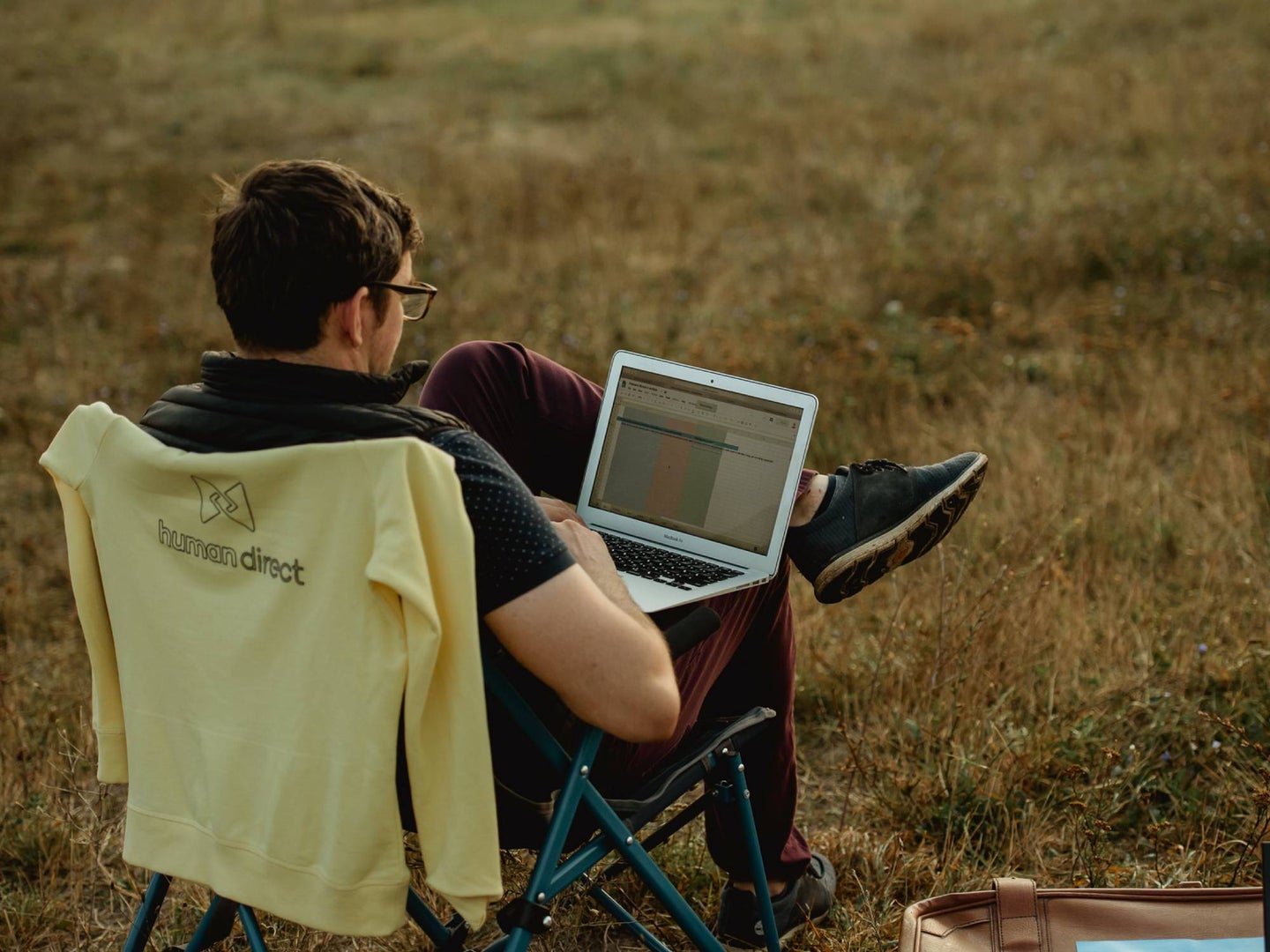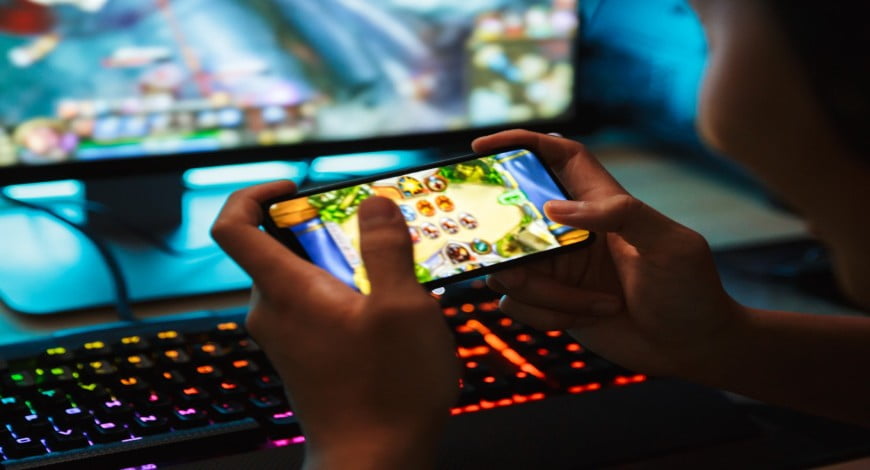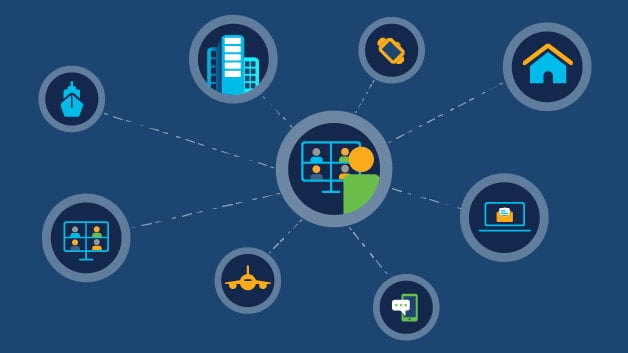

With more employers embracing fully remote and hybrid operations, people now are freer than ever to choose where they log their hours. Some are even giving working from anywhere a try for the first time.
That’s something I have plenty of experience with. I was a digital nomad for more than a year before the pandemic, and in the last several years I’ve done my fair share of working from planes, trains, cars, Airbnbs, and hotels—from the far-flung mountains of Otavalo, Ecuador, to the shores of mid-coastal Maine.
No matter your destination, if you’re considering taking your work-from-home office on the road, here are the top 14 items you should pack.
#1: Lap desk
No desk, no problem. I use a lap desk to get work done when in transit or at accommodations without a dedicated space. In a pinch, you can use it to create a makeshift standing desk, placing the lap desk on top of an empty box or a steady stack of books on a counter.
This one from Home Office Pro is a great choice. Heather Jeffcoat, an orthopedic physical therapist, and owner of Fusion Wellness & Physical Therapy in Los Angeles, California, says this type of product can help keep your elbows in a good position, which is any angle between 90 and 120 degrees where you feel comfortable. This Home Office Pro model comes with a wrist rest cushion to help you keep your joints in a neutral position as well.
But with your computer on your lap, your screen won’t be at eye level, so Jeffcoat says it’s important to look out for any signs of neck pain. To prevent your head holder from hurting, she recommends the next item on our list.
#2: Portable standing desk converter or laptop riser
You can use flexible laptop risers like VIVO’s standing desk converter or the WorkEZ monitor stand to elevate your screen above your table or desk. This will help you recreate your ergonomic home office setup on the go by allowing you to alternate between sitting and standing.
The benefit is twofold, says Jeffcoat. First, portable desk converters can place your screen at eye level, helping to reduce strain on your neck and mid-back. Second, these stands are designed to make it easy to change up your position throughout the day, which can help reduce musculoskeletal pain and is beneficial for your body in the long run. That’s because while sitting too long is linked with lower back pain, standing for an entire workday isn’t ideal either as you’ll have to worry about your full body posture. People who have had injuries in their lower bodies, in particular, should be careful to avoid standing too much, as doing so could exacerbate pre-existing issues such as knee pain.
“Ultimately, you have to know your body’s limitations and take into account previous injuries,” Jeffcoat says. “But always keep in mind that changing positions is generally preferred to prolonged static positions.”
If you’re torn, VIVO’s model is more of a true flexible sit-to-standing desk, but its biggest drawback is its size and it will only fit in a checked bag. On the other hand, at 19 inches wide, 11 inches tall, and 2 inches thick, WorkEZ can even fit in a carry-on that meets the notoriously restrictive Spirit Airlines’ size limits, but depending on your stature, it may only help you work from a standing position when used at a bar-top counter height.
#3 and #4: External Bluetooth keyboard and mouse
When using a laptop with a portable standing desk or monitor riser, having an external, Bluetooth-enabled keyboard and mouse is ideal for keeping your screen at eye level and your elbows and wrists in an ergonomic position.
For a Bluetooth keyboard that’s ergonomic, Jeffcoat recommends the Logitech ERGO K860, an ergonomic split wireless keyboard that’s compatible with Windows and Mac devices and has a palm rest. Her go-to mouse picks are the Logitech MX Vertical Advanced Ergonomic Mouse or any other from Logitech’s ERGO line.
#5: Anti fatigue mat
My go-to anti-fatigue floor mat, the Anti Fatigue Kitchen Floor Mat by Eroghead, feels nice and spongy under my feet, so it serves as motivation for standing while I work. Mine is on the smaller side (17-by-22 inches), so it won’t take up too much space in my bags or accommodations, but you can definitely go bigger if that’s not an issue.
The nice sensation under your feet is not the only reason to start using an anti-fatigue mat, as research shows they decrease perceived discomfort. Using one of these mats also creates a mildly unstable surface, which slightly engages your core and lower extremities, especially your calves.
“This encourages blood flow throughout your body, with your calves serving as the pump,” says Jeffcoat. “These mats also encourage dynamic movement, such as weight shifting side to side.”
Even small movements throughout the day can help prevent us from locking our muscles in place and can help increase our range of motion for our joints.
#6 and #7: Lumbar support cushion and tailbone support cushion
Lumbar support cushions like this one by Everlasting Comfort, and this one by Newgam, can help avoid and relieve pain in the lower back and coccyx by facilitating a neutral position.
“For most people, [a neutral position is] halfway between being fully flexed or fully extended,” Jeffcoat explains. If you need help supporting this posture, a lumbar or tailbone support cushion will do the trick while also serving as a good reminder to sit with proper posture.
For patients experiencing tailbone pain, she also recommends products like this office chair seat cushion by Everlasting Comfort, which has a unique design that helps users disperse weight more evenly when seated.
#8: Noise-canceling headphones
Noise-canceling headphones are the only reason I can truly concentrate while working from anywhere in the world. No matter what’s going on in the background—whether it’s my preschooler’s not-so-quiet “quiet playtime,” or the endless blaring of airport announcements—this gadget always makes it easy to get the most out of my irregular working hours.
As to which one you should get, it’ll depend on factors such as whether you like an over-the-ears headset or you’re more of a minimal earbuds kind of person, and what level of noise-canceling you actually need. If you need a little guidance, you can’t go wrong with staples such as the Sony WH-1000XM4 or the Bose 700 headphones.
While the headphones themselves don’t always cancel everything out, using them in combination with a white noise soundtrack usually does the trick. My favorite is this 10-hour YouTube soundtrack designed to help babies sleep (it worked for mine) and I swear by it for getting work done.
#9: Eyeglasses to block blue light
Whether it’s the placebo effect or not, I swear by blue-light blocking glasses. They help me work for hours at a time without experiencing eye strain, something I was prone to before giving mine a try. They also protect your peepers from retinal cell damage and prevent this particular lightwave from contributing to the formation of cataracts and eye cancer.
You can go to your optometrist and ask for the whole package of eye-goodies, but you don’t have to splurge to get these benefits—at $7, the pair I use is stylish and won’t break the bank.
#10 and #11: WiFi hotspot and solar-powered power bank
This doesn’t necessarily have to be a standalone device. In fact, your own phone or an unlocked prepaid SIM card with data may be the best bet, but make sure you can actually use that mobile data as a hotspot, as some carriers don’t allow it.
More recently, when traveling to Central America to visit family, I added extra data to my in-laws’ local pre-paid phone plans and used their devices as hotspots, allowing me to join Google Meet video calls and get my work done. That was much more effective than the Solis hotspot I tried out while traveling internationally, which was unreliable in remote areas.
These days, my digital nomad life finds me mostly based in the U.S., so I’ve added the option of using my phone as a hotspot to my phone plan, and I rely on that almost exclusively whenever I’m working on the go.
While you’re at it, it will likely make sense to invest in a portable power bank, like this solar powered charger. Using your device as a hotspot will certainly drain your battery super quickly, and you don’t want to depend on finding available outlets.
#12: Backup gadgets
Depending on how long you’re traveling for and where you plan on going, it may be worth packing some extra devices and accessories, like a spare Bluetooth-enabled set of a mouse and keyboard, and a second pair of headphones. When my MacBook’s trackpad broke suddenly when I was working in a remote area in Maine, I had to borrow my husband’s laptop for a work call before I could trek out half an hour away to buy a mouse.
It’s also a good idea to always carry devices that can effectively replace another one. When I was traveling in the Galapagos, I went snorkeling with my not-so water-resistant Google Pixel. Luckily, I was able to use an iPad with a Google Voice app as a backup until we were back on the mainland. Likewise, if your laptop were to suddenly die on you, having a compatible keyboard you can use with your tablet could be a lifesaver.
#13 and #14: Foam roller and massage balls
When you travel, the lines that separate work from resting times can become blurred and add up to extra stress, Jeffcoat says. This is why it’s important to make time for exercise and self-care.
To inject some pampering into your routine and counterbalance some of the potential discomforts from working on the road, she recommends packing your own portable recovery kit. This foam roller by TriggerPoint for deep tissue massage and muscle recovery, and these therapy massage balls by ActiveProZone, are two self-care items she recommends that travel well. Jeffcoat recommends using them once or twice a day to help reverse the effects of having a less than ideal posture while working.
“Place the roller perpendicular to your spine, and roll it from your neck towards the bottom of your ribcage for 30 seconds,” she explains. If you feel a particularly sore spot, stop there and word it—take a deep breath in, exhale, and extend your back over the roller, holding it for five seconds. “Make sure you are supporting your neck with your hands during this exercise,” she says.
When it comes to the massage balls, lie on the floor or lean against a wall while placing the spheres between your shoulder blades and your spine. Roll your body weight toward the balls until you feel pressure, Jeffcoat instructs, and hold the position until the sensation becomes more comfortable. You can continue by moving the ball between your neck and the bottom of your shoulder blades until you’ve worked out a few spots on each side of your upper back.
The work-from-home era might have given us the perfect opportunity to visit all the places in your bucket list without sacrificing your career or worrying about abandoning your team. Now that you know what to pack and what to expect, go and enjoy your journey.
[“source=popsci”]





